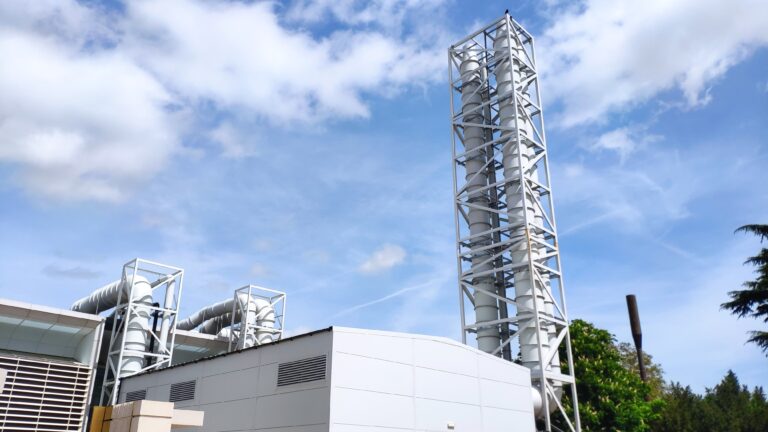Dr Vanessa Champion, AMRSPH, Founder and Editorial Director
Journal of Biophilic Design Ltd
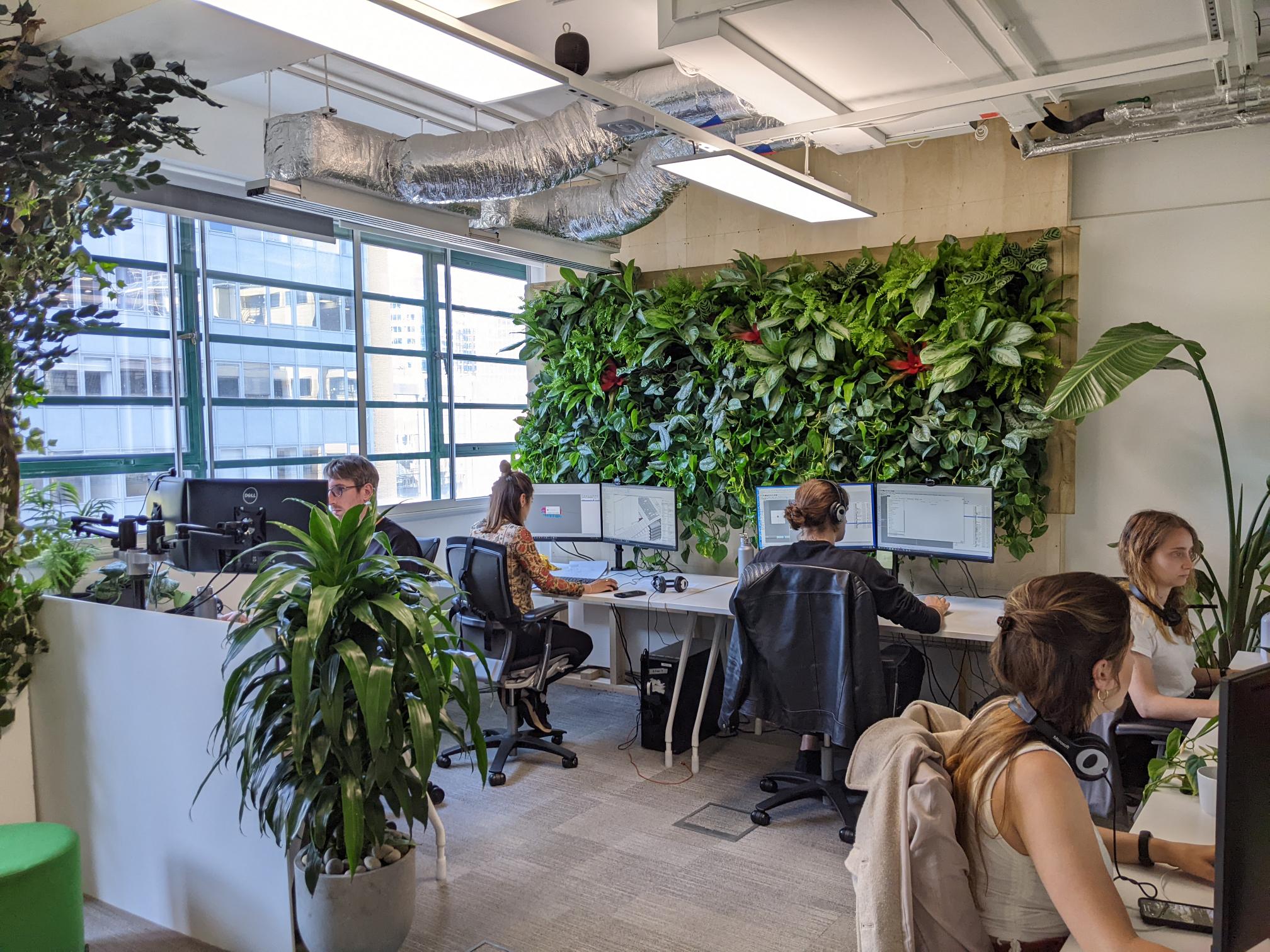
The new Biophilic Framework for design, build and maintenance
Dr Vanessa Champion AMRSPH highlights the growing importance of biophilic design to meet biodiversity and sustainability targets while improving occupant wellbeing and recruitment.
The construction industry significantly impacts the environment through high energy consumption, emissions, and waste generation.
Around 45% of total UK carbon emissions (27% from domestic buildings and 18% from non-domestic) come from built construction. The UK’s Nationally Determined Contribution (NDC), made at COP26, which committed to reducing the UK’s emissions by at least 68% by 2030, enforces a rapid change on the construction and all related industries in the built environment.
Biophilic design is increasingly recognised as a major part of meeting this challenge.
There are thousands of academic research papers and real-world examples which prove that biophilic design is worth the time and investment as the rewards are not only financial, but also benefit the health of people and planet.
The Biophilic Design Framework is simple to understand and deploy. It is being used across the estates of the Ministry of Justice, NHS, Dept of Education, UK Parliament as well as by brands and businesses all over the world.
It is growing fast across retrofit and redesign projects as well as new builds, social housing, new office blocks, hospitals, schools and every sector. It helps reach targets specified by the Environmental, Social, and Governance (ESG) agenda, Biodiversity Net Gains (BNG), Clean Air and Water acts, ISO 14001, Environmental Product Declarations (EPDs) for all materials, integrating whole building Life Cycle Assessment (LCA) and many more.
What is the Biophilic Framework
Biophilia refers to our innate tendency towards living systems and patterns. “Bio” means life and “Philia” means “tendency towards” . The Biophilia Hypothesis was first proposed by E.O.Wilson, a sociobiologist, who described it as: “The urge to affiliate with other forms of life.”
When we cut ourselves off from this, as we have in workplaces, hospitals and our cities, we become unwell – and so does our planet.
The Biophilic Framework reverses the sensory deprivation we experience in the workplace and helps businesses regenerate environments, communities and our planet.
For humans the presence of plants, trees and green spaces acts like preventative medicine, reducing costs and the burden on our healthcare services.
In addition, greenery and patterns from nature (real and contrived) are known to makes us less aggressive, more content and reduce cortisol levels. Building occupants can focus better, and including biophilic design makes workplaces more attractive to staff which helps recruitment and staff retention. In hospitals, patients recover faster freeing. It can even reduce the rate of reoffending in prisons, saving billions of pounds annually.
The Biophilic Framework in action
Divided into exterior and interior frameworks, there are some ‘quick win’ solutions that that businesses can try straight away.
Exterior biophilic design solutions help to reduce air pollution as well as the impact of heat waves and severe weather events. They also improve water and sanitation and remove toxins from the environment, reducing harmful exposure to chemicals, sound pollution from cars and traffic, and more.
There are many approaches to biophilic design. Four exterior examples are:
Rewilding estates wherever possible. This maximises existing estates, reduces energy use, increases BNG and is achieved by shifting labour activities not increasing costs. It can also create community spaces and places for improving mental and physical health, encouraging a more mobile, and active workforce.
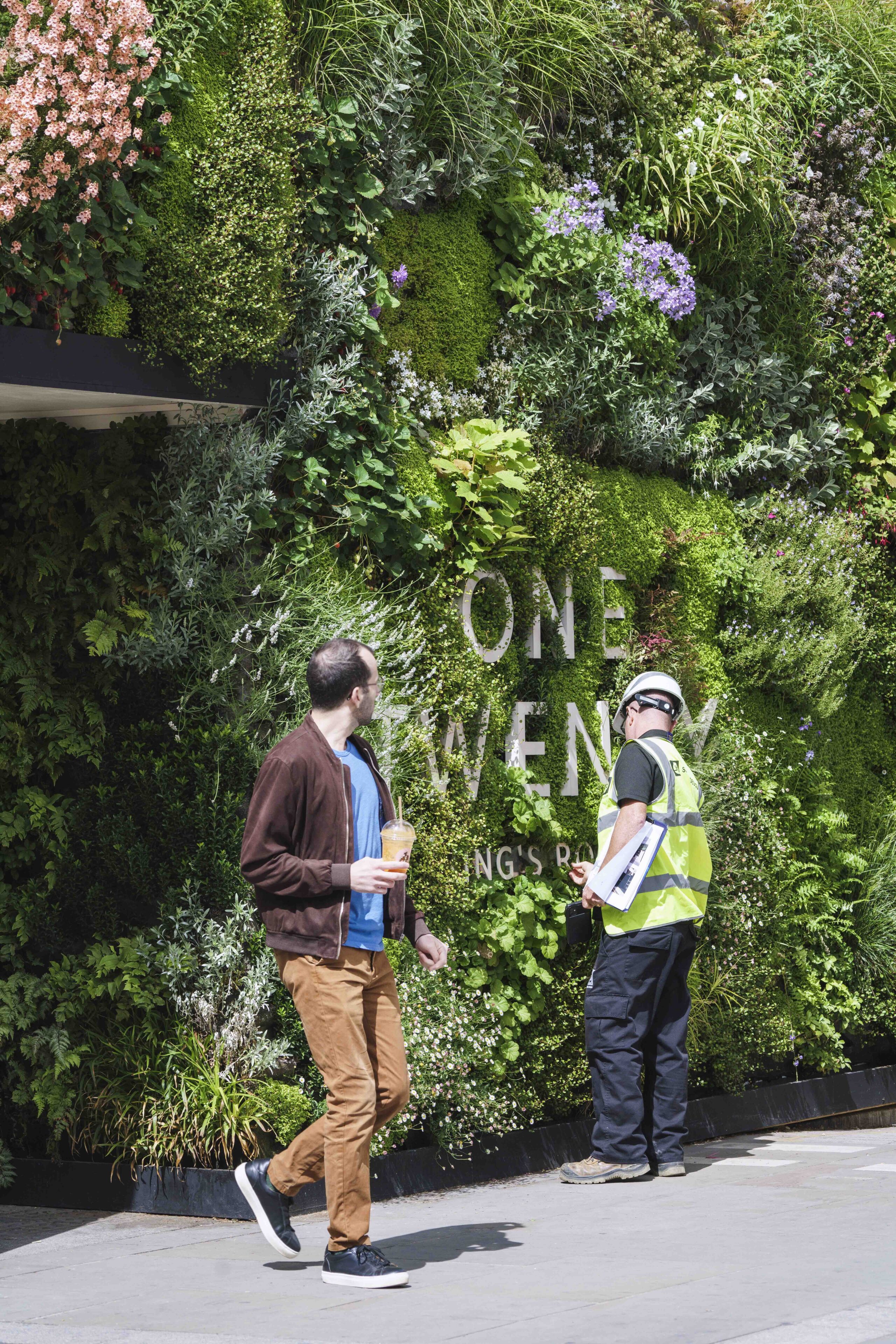
Credit: Phil Allen
Creating greenwalls increase BNG, reduce temperatures inside buildings and keep them cooler in heatwaves. This reducing the need for air conditioning. Greenwalls also reduced toxins in the air and cut down sound pollution. This is important because according to an Environment Agency report: “Air pollution is the single biggest environmental threat to health in the UK, shortening tens of thousands of lives each year. After air pollution, noise causes the second highest pollution-related burden of disease in Europe.”
Noise pollution alone can cause coronary heart disease and metabolic health outcomes, such as diabetes and obesity. Manchester City Council are installing living walls because they recognise that they can reduce noise levels and pollution by around 50%.
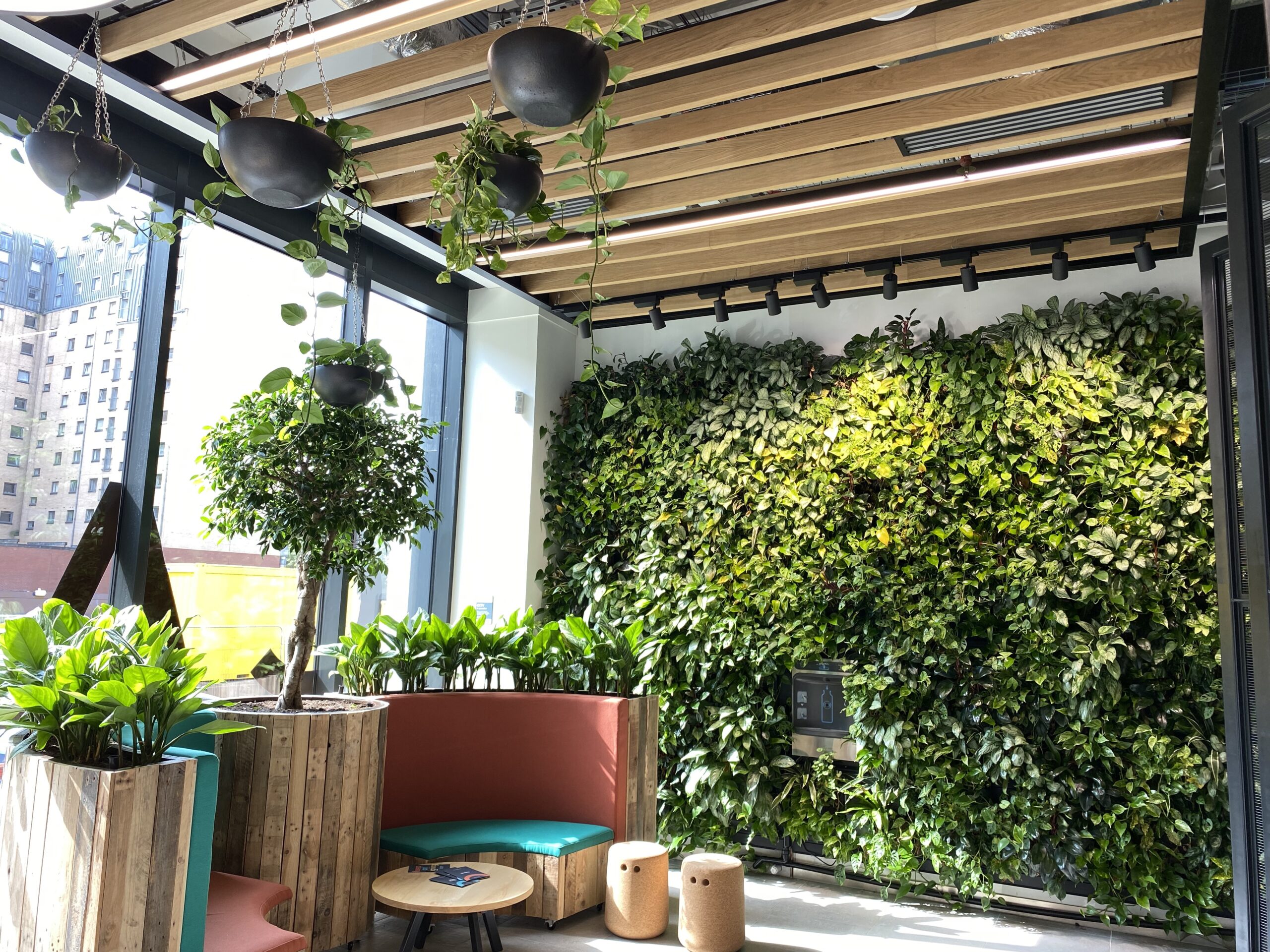
Tree planting reduces the heat island effect on estates. Planting indigenous species, increases BNG. Trees can also help reduce flood risk and reduce water consumption when strategically planted along with solutions like SUDs.
Developing waterscapes support cooling, increase BNG, plus have the added benefit of what is referred to as the “blue mind effect”. This describes the state of water-associated peace. Water increases the positive neurotransmitters dopamine, serotonin and oxytocin, while it decreases cortisol (stress).
Interior biophilic design solutions improve the sensory environment for building occupants and users. They help businesses reach ESG targets and product lifecycle concerns while also improving cognitive function and creativity. Examples include:
Introducing natural light to a space by positioning desks in workplaces and beds in healthcare, so they are orientated to receive natural light from windows. Sleep regulation is influenced by the homeostatic mechanisms of the circadian rhythm, which governs the sleep/wake cycle. This 24-hour internal clock in our brain regulates periods of alertness and sleepiness by responding to changes in light within our environment.
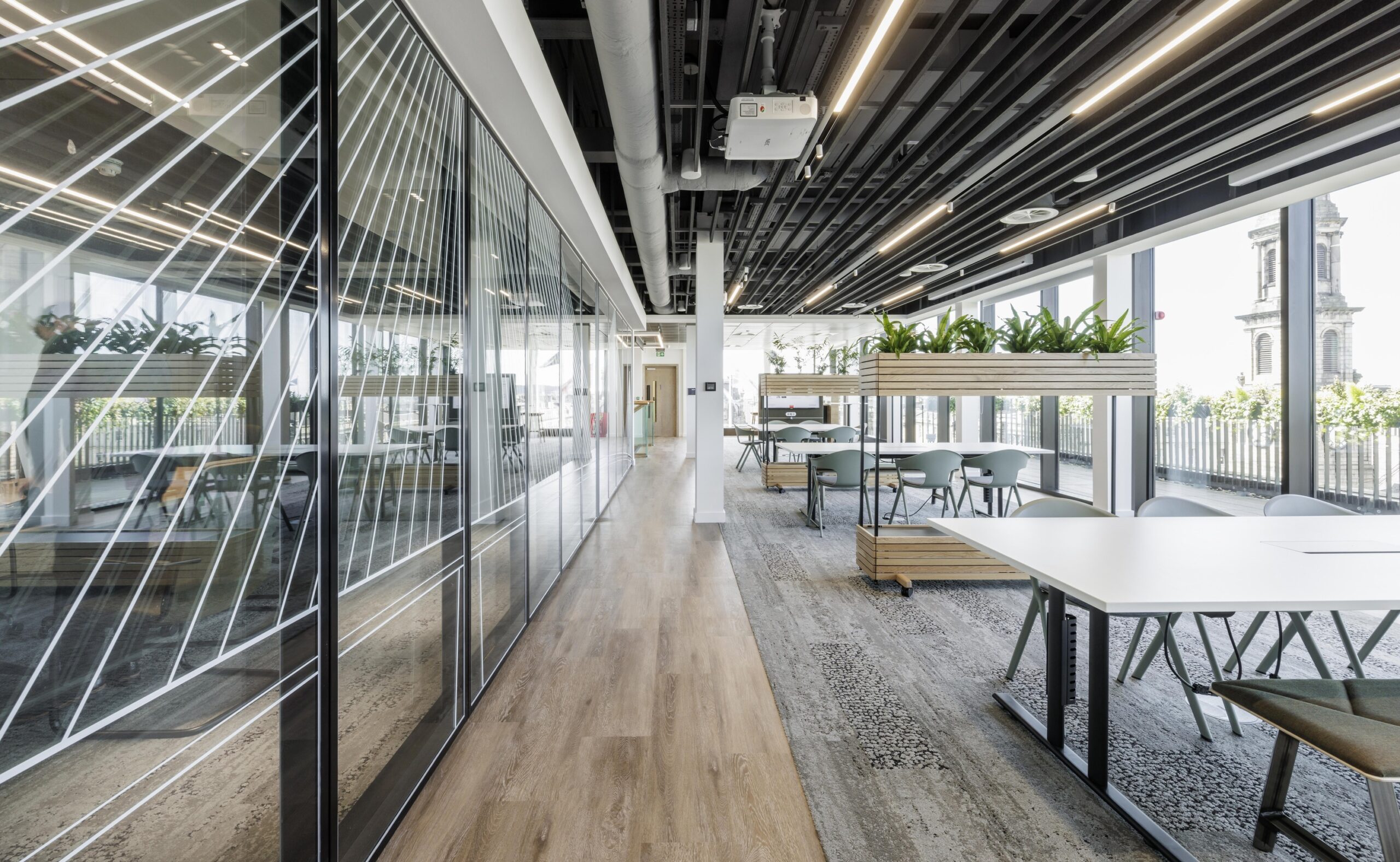
Provide exterior views for building users. If we are rewilding environments outside, views from inside buildings will be vastly improved, which improves our wellbeing. If there are no windows, or the views are full of concrete and car parks, then it is possible to introduce nature virtually, with images of videos. Scenes with a pathway, or with fractals are recommended because seeing these activates our vagal nerve and helps us flourish at whatever we are doing.
Use natural materials and colours such as wood desks and furniture as this can result in significant decreases in occupants’ diastolic blood pressure, reducing our stress levels. Real materials are preferred over synthetic because human receptors can tell the difference. So chose wood, bamboo, stone, fossil textures, cork, grasses, rattan, cotton, linen, granite. By focusing on eco-friendly materials and practices, the design and build industry can also lower its carbon emissions and lessen its environmental impact.
Also gaining traction are mass timber buildings, for instance The Black and White Building, designed by Waugh Thistleton Architects. This is the tallest engineered timber office in central London and was described by RIBA journal as: “A major step forward for the development and construction industry.
In a recent podcast I did with the architect Andrew Waugh, for The Journal of Biophilic Design, he describes how wood buildings have better acoustics, plus the hydroscopic nature of wood creates better air quality and the calming properties of sawn timber are among the many benefits. The external wood design creates solar shading on the building which reduces energy use for heating and cooling by about a third.
This article is just an introduction and only touches the surface of what biophilic design can do for our built environment and the mental health of all of us, from construction worker to doctor, from children to whole communities.
To find out more please reach out to the biophilic design community which is made up of professionals in all aspects of the built environment including, facilities, planning, design, surveying, engineering, architecture, and landscaping. Find out more and join the movement.


